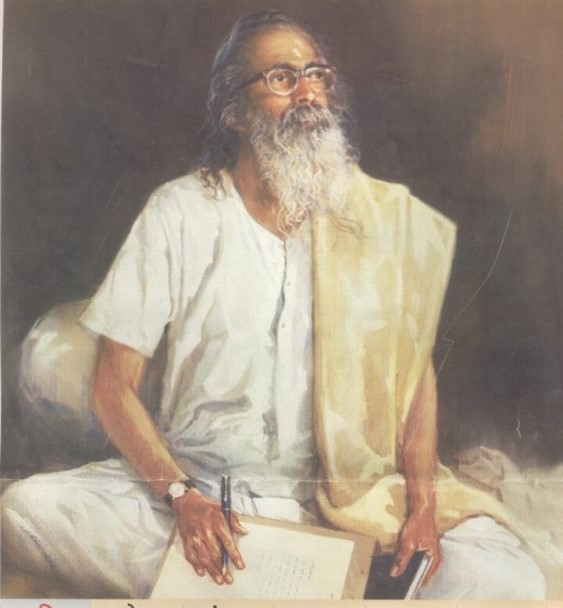M. S. Golwalkar Age, Death, Family, Biography
Quick Info→
Hometown: Nagpur, Maharashtra
Death Date: 05/06/1973
Age: 57 Years
| Bio/Wiki | |
|---|---|
| Other Name | Guruji |
| Profession(s) | Author, Lawyer, Political activist |
| Physical Stats | |
| Eye Colour | Black |
| Hair Colour | White and Black |
| Personal Life | |
| Date of Birth | 19 February 1906 (Monday) |
| Birthplace | Nagpur, Maharashtra |
| Date of Death | 5 June 1973 |
| Age (at the time of death) | 67 Years |
| Zodiac sign | Pisces |
| Nationality | Indian |
| Hometown | Nagpur, Maharashtra |
| College/University | • Hislop College, Nagpur • Banaras Hindu University, Varanasi |
| Educational Qualification | • A Bachelor of Science Degree from Banaras Hindu University (1927) • A Master's Degree in Biology from Banaras Hindu University (1929) • A Bachelor of Laws Degree from Nagpur (1937) |
| Religion | Hinduism |
| Hobby | Reading |
| Family | |
| Parents | Father- Sadashivrao (Clerk in the Posts and Telegraphs Department) Mother Lakshmibai Golwalkar |
Some Lesser Known Facts About M. S. Golwalkar
- He was born and brought up in Ramtek, near Nagpur in Maharashtra.
- He was the only surviving son out of nine children.
- As he grew as an adult, he developed keen interest in religion and spiritual meditation.
- M. S. Golwalkar was the second Sarsanghchalak Chief of the Hindutva organisation Rashtriya Swayamsevak Sangh (RSS).
- Golwalkar is considered one of the most influential and prominent figures among Rashtriya Swayamsevak Sangh and the Hindu Nationalists by his followers.
- He was influenced by the work of Madan Mohan Malaviya, a nationalist leader and founder of the university.
- He went to Madras to pursue a doctorate degree in Marine Biology, which he couldn’t pursue due to his father’s retirement.
- He was the first person to bring the concept of a cultural nation also known as Hindu Rashtra which is believed to have evolved into the concept of the Akhand Bharat Theory also called united nations for Bhartiya’s.
- Golwalkar was one of the early Hindu nationalist thinkers in India.
- He taught zoology for three years at BHU, where his students used to call him Guruji due to his physical appearance with long hair, beard and robe, which was later continued by the RSS followers
- Later, one of his students in Banaras Hindu University and other associates of the RSS Sarsanghchalak, and K. B. Hedgewar founded an RSS shakha (branch) in Varanasi.
- In 1931, a political activist Hedgewar visited Benares and was influenced to the ascetic M. S. Golwalkar.
- 1934, Hedgewar made him secretary of Nagpur branch. After he started practicing law, Hedgewar tasked him to manage the ‘Akola Officers’ in the Training Camp.
- In October 1936, he gave up his law practice and RSS duties for the Sargachi Ramakrishna Mission ashram in West Bengal to become a sanyasi. He decided to become a disciple of Swami Akhandananda.
- On 13 January 1937, he received his Diksha (a religious practice) and left the ashram soon afterwards.
- M. S. Golwalkar’s guruji died in 1937, which brought him to the state of depression, and he returned to Nagpur to take advice from his fellow Hedgewar, who asked him to start working for RSS.
- In 1938, he translated the G. D. Savarkar’s Marathi language book Rashtra Mimansa (1934) into English and Hindi languages. The book was named “We, or Our Nationhood Defined”, and it was published in Golwalkar’s name.
- In 1939, on the festival of Guru Dakshina, Hedgewar made an announcement for Golwalkar to be the next general secretary.
- On 21 June 1940, a day before his death Hedgewar gave Golwalkar a sheet of paper asking him to be the RSS leader.
- Being a RSS’ leader for more than 30 years, Golwalkar worked to made it one of the strongest religious-political organizations in India. RSS membership expanded from 100,000 to over one million. The community branched out into the political, social, religious, educational, and labor fields through 50 front organisations.
- Golwalkar’s ideologies of anti-communism, anti-socialism along the slogan “Not socialism but Hinduism” was one of his great innovations.
- In January 1948, after Mahatma Gandhi was assassinated by Nathuram Godse, which led to a widespread tension that the RSS was involved. Golwalkar and Other 20,000 RSS workers were arrested on 4 February. The RSS was banned for promoting violence and subversion.
- On 11 July 1949, the ban from RSS was lifted. The ban was lifted on Golwalkar’s promise of loyalty to the Constitution of India and the acceptance of India’s national flag explicitly in the RSS constitution.











